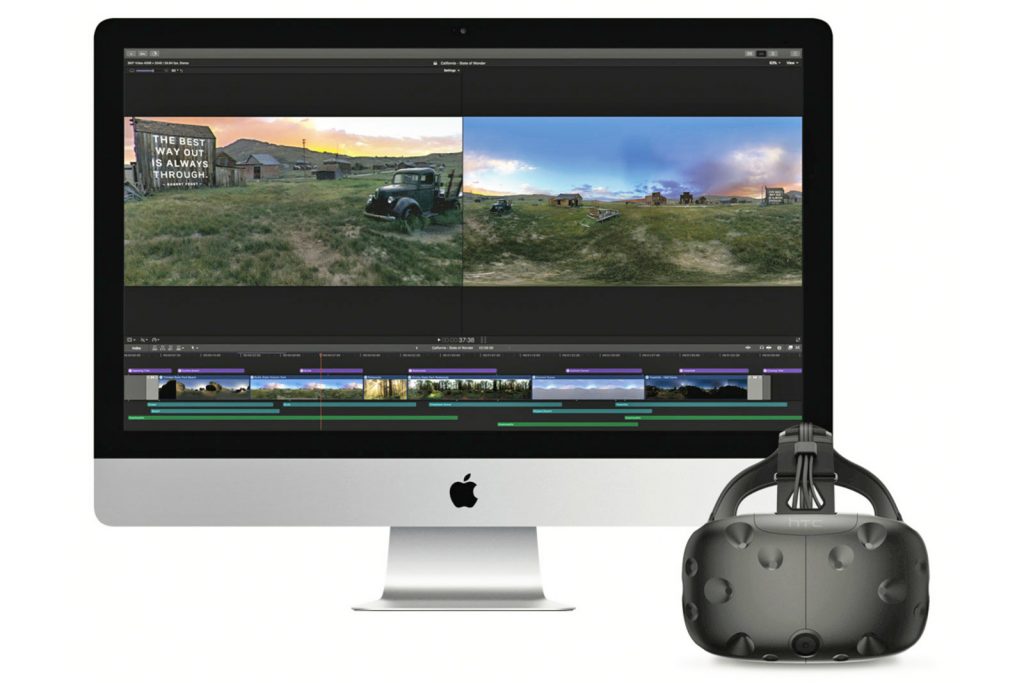 Apple has updated their flagship video editing software recently and it’s fairly substantive. There’s a variety of small tweaks but the biggest things to look at are: 360 video editing, color grading, and HDR.
Apple has updated their flagship video editing software recently and it’s fairly substantive. There’s a variety of small tweaks but the biggest things to look at are: 360 video editing, color grading, and HDR.
While 360 has yet to fully take-off as a widespread platform, the new built-in tools for editing should go a long way into making the technology more accessible. Until this point, editing 360 video was technically possible in FCPX, but if you wanted to make any significant edits you had to use to a plug-in like this one from Dashwood. 10.4 largely just puts the tools directly into the software which make them both faster and easier to use.
The standout tool is a new viewing window which allows you to preview the headset view of the 360 image (where you can drag on the screen to look around). This works in real time during video playback and is seamless. Other tools allow you to reorient the sphere of the 360 video, patch elements of the video to remove tripods and the like, and add some simple blur/sharpen effects. The main addition I haven’t seen before is 2D text effects. Before this update, adding a basic text graphic to a 360 video in FCPX meant it was warped to match the curvature of the video. This update allows you to create text graphics that lie flat within the sphere, which looks much cleaner.
The software supports both monoscopic and stereoscopic 360 video, as well as the option to view your project within a connected headset like the HTC Vive. Though we haven’t been able to test that yet, look for an update in the coming months hopefully.
For those that don’t work with 360 video, the new color correction options are the main highlight in 10.4. The tools have been given more prominence in the inspector window by gaining their own dedicated tab. In addition to the old color board, 10.4 features color wheels, color curves and hue/saturation curves. Many of these tools are new ways of doing the same adjustments in a new interface albeit with some finer control. A couple new options that stood out to me were the ability to isolate a specific hue and adjust it’s saturation, exposure, etc. It’s great for making some colors pop without affecting the rest of the image. To the same degree, another tool in the hue/saturation curves targets orange hues, presumably for bring out some color in flesh tones. It works great with the few samples I’ve tested, but I still want to see how well it works with people of all colors.
While the 4K revolution has been going strong for a while now, the other buzzword in new televisions finally has support in Final Cut. HDR (high dynamic range) offers a wider color gamut which can produce some incredibly vibrant images in TVs that support it. Of course, this means you’ll need a proper HDR reference monitor to take advantage of this part of the update. Like 360 video, HDR support in this update goes a long way into making the technology more accessible to everyone.
Some smaller updates of note include importing iOS iMovie projects, and support for HEVC and HEIF (high efficient video coding and high efficient image format, respectively). For professional editors who work with amateur video producers, importing iMovie projects from a phone is a nice option. A faculty member could film something abroad on their iPhone, do some basic edits in iMovie, and send it along to their editor who could then do some more advanced editing in Final Cut.

